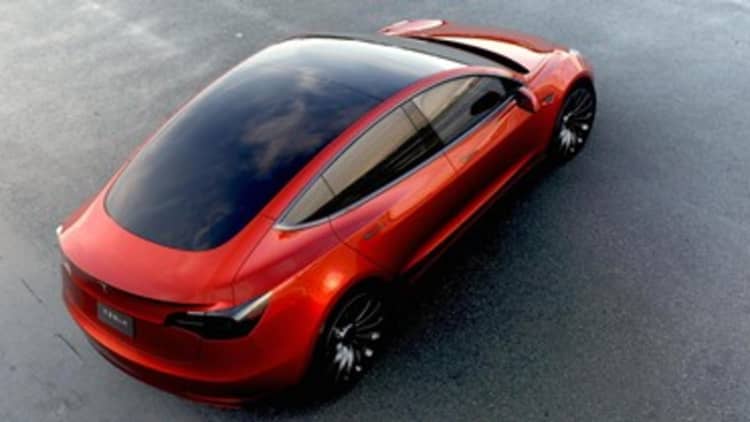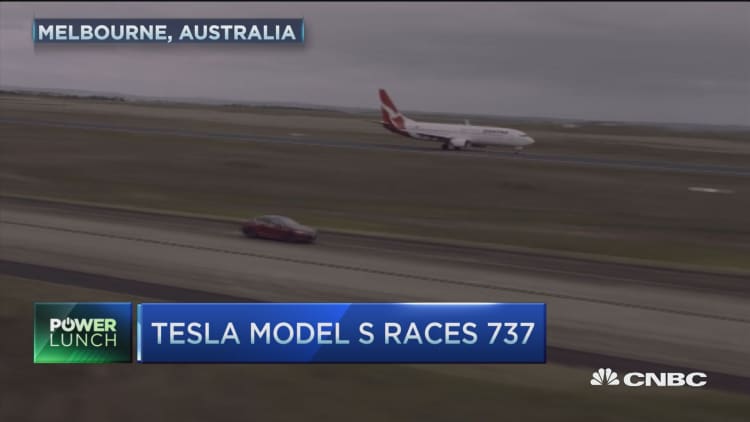


As orders for Tesla's new Model 3 climb, they're also raising a question that's critical to the automaker's future: Will the company need to raise billions of dollars to expand its capacity?
Officially, Tesla has given no indication it needs more cash. But analysts said the automaker could be primed to use a surge in Model 3 reservations — which have already topped 325,000 — as leverage to raise capital.
Barclays analyst Brian Johnson told investors he thinks the automaker could seek to raise $3 billion to expand capacity and better meet a surge in demand. Raising billions either in the debt or equity markets is likely to give investors pause, and cause them to calculate how much that new capital would weigh on Tesla's bottom line.
As of fourth quarter 2015, Tesla had $2.64 billion in long-term debt.
"We believe Tesla may justify an additional capital need by citing that demand exists to build more car and battery factories sooner rather than later, while also taking advantage of an open capital market," Johnson said.
In the first quarter, Tesla delivered 14,820 vehicles. That fell short of expectations for 16,000, giving fuel to critics who question whether Tesla can make the jump from niche automaker to mass-market company. For the full year, Tesla still expects to deliver 80,000 to 90,000 vehicles.
At the center of its production issue is the automaker's final assembly plant in Fremont, California, and whether it can ramp up production there quickly and profitably. When the plant was previously owned by a joint venture between General Motors and Toyota, it had the capacity to build up to a half million vehicles annually — indicating Tesla should have plenty of room to expand when it ramps up production of the Model 3 in 2017 and 2018.
The bigger question hanging over Tesla is when the company might add a second final assembly plant, and whether that plant would be in the U.S. or overseas in Europe or China.
A key factor in that determination will not only be the markets where Tesla vehicles are being sold, but where it can build its supply chain. Tesla's Gigafactory outside of Reno, Nevada, will soon be building the battery packs needed for its growth in production.
"The question is whether Tesla can successfully build the cars," Johnson said. "We argue it faces unappreciated risk in ramping volumes (and thus in becoming a mass market original equipment manufacturer) unless it can improve in manufacturing and cash management."
As debate swirls over whether Tesla will be able to keep up with demand, some analysts remain skeptical that the automaker will be able grow annual sales to a half-million vehicles by 2020, as CEO Elon Musk has targeted.
"When people tell me they are going to go from 100,000 units to 500,000 units within four years, I would not bet on it," said Ronnie Moas of Standpoint Research, who has a sell rating on Tesla shares.
Tesla stock was trading on Friday about 2.5 percent lower, near $250.
Questions? Comments? BehindTheWheel@cnbc.com.





